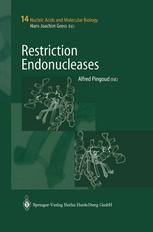

Most ebook files are in PDF format, so you can easily read them using various software such as Foxit Reader or directly on the Google Chrome browser.
Some ebook files are released by publishers in other formats such as .awz, .mobi, .epub, .fb2, etc. You may need to install specific software to read these formats on mobile/PC, such as Calibre.
Please read the tutorial at this link: https://ebookbell.com/faq
We offer FREE conversion to the popular formats you request; however, this may take some time. Therefore, right after payment, please email us, and we will try to provide the service as quickly as possible.
For some exceptional file formats or broken links (if any), please refrain from opening any disputes. Instead, email us first, and we will try to assist within a maximum of 6 hours.
EbookBell Team

5.0
90 reviewsRestriction enzymes are highly specific nucleases which occur ubiquitously among prokaryotic organisms, where they serve to protect bacterial cells against foreign DNA. Many different types of restriction enzymes are known, among them multi-subunit enzymes which depend on ATP or GTP hydrolysis for target site location. The best known representatives, the orthodox type II restriction endonucleases, are homodimers which recognize palindromic sequences, 4 to 8 base pairs in length, and cleave the DNA within or immediately adjacent to the recognition site. In addition to their important biological role (up to 10 % of the genomes of prokaryotic organisms code for restriction/modification systems!), they are among the most important enzymes used for the analysis and recombination of DNA. In addition, they are model systems for the study of protein-nucleic acids interactions and, because of their ubiquitous occurence, also for the understanding of the mechanisms of evolution.
The present book deals with all aspects of restriction endonucleases including nomenclature, diversity, evolution, genetics, structure and function, mechanism of target site location and DNA recognition, enzymology, protein design, and provides a description of the history of the discovery of and the research on restriction enzymes.